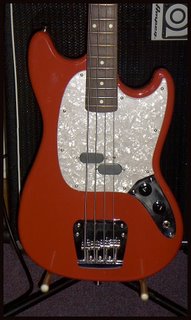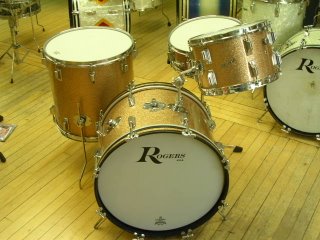Who Needed DJs? We had Garage Bands
During the first half of the 70s a disk jockey was somebody who announced music on the radio. The idea of paying money to hear somebody play records was about as absurd as buying bottled water. If you were throwing a high school dance or block party in our area, you hired a live band – and there were plenty to choose from. These garage groups (so designated because of their typical rehearsal spaces) typically were made up of teenagers who played covers of popular songs. None belonged to a union, and few made any money, especially after paying for their equipment. Some were really great. Some stank. Almost all were very loud.
As in most of the ways in which teenagers rebel and assert their individuality, there were strict unwritten rules and standards for garage bands, in terms of what songs they played (and didn’t), how they dressed (usually pretty trashy), and what instruments were acceptable (Fender or Gibson guitars and basses, Ludwig or Rogers drums), and so forth. The bass pictured here, a Fender Mustang, wa s similar to the model which I played, although mine had a sunburst color scheme. I bought it for $120 at Sam Ash in 1973.
s similar to the model which I played, although mine had a sunburst color scheme. I bought it for $120 at Sam Ash in 1973.
Although lineups varied a bit, every garage band had at least one guitarist, a bass player and a drummer. A second (or even a third) guitar player was a common addition, as was an organist (nobody had synthesizers, and the electric pianos of the day usually sounded like toys). Occasionally you’d find a horn (usually a sax), but wind instruments weren’t very popular amongst kids who wanted to play rock and roll. Singers were often an afterthought, and not considered serious musicians. If one of your players could sing not too off-key, you gave them a mike. If not, you found some kid who could carry a tune. Almost all garage bands were exclusively male, although a female vocalist (usually the girlfriend of one of the players) might join them on a few tunes.
Learning to play serious rock and roll during the early seventies was a challenge, as many of the music publishers had yet to figure out that there was a big market for good teaching materials and sheet music, and good teachers were scarce. I took bass lessons for six months in 1972, and the teacher used a book written in 1957 that focused chiefly on “New Sounds” l ike boogie-woogie. If you wanted sheet music for a current hit, you typically got a piano arrangement often in a key different from the original, with basic guitar chords written above the words. This might have worked for Peter, Paul and Mary, but not Zeppelin. Then again, few of us could really read sheet music in the first place.
ike boogie-woogie. If you wanted sheet music for a current hit, you typically got a piano arrangement often in a key different from the original, with basic guitar chords written above the words. This might have worked for Peter, Paul and Mary, but not Zeppelin. Then again, few of us could really read sheet music in the first place.
Despite their amateur appearances, garage bands were not punk groups, and savvy kids judged their musicianship as critically as the jocks analyzed the school basketball team. Being a good musician typically meant playing as close to the original record as you could; there wasn’t much emphasis upon experimentation. Almost every band did some Rolling Stones tunes, as they were simple and popular at dances, but the more respected outfits would delve into the repertoires of everyone from Zappa to the Allman Brothers. Since a school dance or block party gig often ran for at least two hours you had to have a lot of material under your belt, all memorized (only keyboard players were allowed to have sheet music).
Next time we’ll talk about some of the more popular tunes that the garage bands covered.
As in most of the ways in which teenagers rebel and assert their individuality, there were strict unwritten rules and standards for garage bands, in terms of what songs they played (and didn’t), how they dressed (usually pretty trashy), and what instruments were acceptable (Fender or Gibson guitars and basses, Ludwig or Rogers drums), and so forth. The bass pictured here, a Fender Mustang, wa
 s similar to the model which I played, although mine had a sunburst color scheme. I bought it for $120 at Sam Ash in 1973.
s similar to the model which I played, although mine had a sunburst color scheme. I bought it for $120 at Sam Ash in 1973.Although lineups varied a bit, every garage band had at least one guitarist, a bass player and a drummer. A second (or even a third) guitar player was a common addition, as was an organist (nobody had synthesizers, and the electric pianos of the day usually sounded like toys). Occasionally you’d find a horn (usually a sax), but wind instruments weren’t very popular amongst kids who wanted to play rock and roll. Singers were often an afterthought, and not considered serious musicians. If one of your players could sing not too off-key, you gave them a mike. If not, you found some kid who could carry a tune. Almost all garage bands were exclusively male, although a female vocalist (usually the girlfriend of one of the players) might join them on a few tunes.
Learning to play serious rock and roll during the early seventies was a challenge, as many of the music publishers had yet to figure out that there was a big market for good teaching materials and sheet music, and good teachers were scarce. I took bass lessons for six months in 1972, and the teacher used a book written in 1957 that focused chiefly on “New Sounds” l
 ike boogie-woogie. If you wanted sheet music for a current hit, you typically got a piano arrangement often in a key different from the original, with basic guitar chords written above the words. This might have worked for Peter, Paul and Mary, but not Zeppelin. Then again, few of us could really read sheet music in the first place.
ike boogie-woogie. If you wanted sheet music for a current hit, you typically got a piano arrangement often in a key different from the original, with basic guitar chords written above the words. This might have worked for Peter, Paul and Mary, but not Zeppelin. Then again, few of us could really read sheet music in the first place.Despite their amateur appearances, garage bands were not punk groups, and savvy kids judged their musicianship as critically as the jocks analyzed the school basketball team. Being a good musician typically meant playing as close to the original record as you could; there wasn’t much emphasis upon experimentation. Almost every band did some Rolling Stones tunes, as they were simple and popular at dances, but the more respected outfits would delve into the repertoires of everyone from Zappa to the Allman Brothers. Since a school dance or block party gig often ran for at least two hours you had to have a lot of material under your belt, all memorized (only keyboard players were allowed to have sheet music).
Next time we’ll talk about some of the more popular tunes that the garage bands covered.

0 Comments:
Post a Comment
Subscribe to Post Comments [Atom]
<< Home